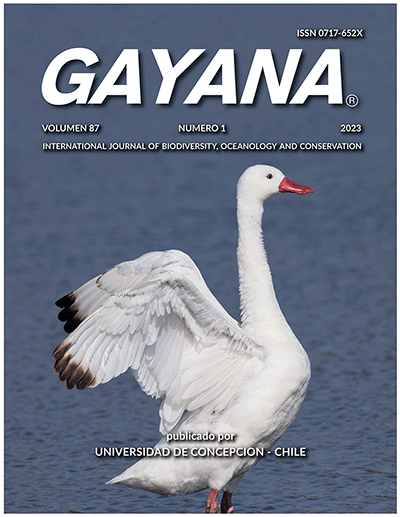Resumen
We analyze the habitat factors that influence the site selection of the coastal chinchilla Chinchilla laniger for the establishment of colonies in Las Chinchillas National Reserve, Aucó, Coquimbo Region, Chile. We used generalized linear models and a presence-absence design with logistic adjustment, considering the presence and absence of Puya berteroniana, rocky outcrops, altitude, slope, exposure, and both vertical and horizontal vegetation cover as explanatory variables. The model variables that would best explain the presence of chinchilla colonies in the Reserve would be the presence of puya, followed by altitude, presence of rocky outcrops, and vertical vegetation cover. The results indicate that when P. berteroniana is present, the probability of finding a chinchilla colony is 97% (95% CI = 56% - 99%), which decreases to 23% (95% CI = 12% - 39%) when this species of bromelaceae is not present in the habitat. The results suggest that C. laniger selects specific microhabitats within the heterogeneous environment of the semi- arid landscape of the Las Chinchillas National Reserve.

Esta obra está bajo una licencia internacional Creative Commons Atribución-NoComercial 4.0.
Derechos de autor 2023 Víctor Bravo-Naranjo, Carlos Zuleta-Ramos

